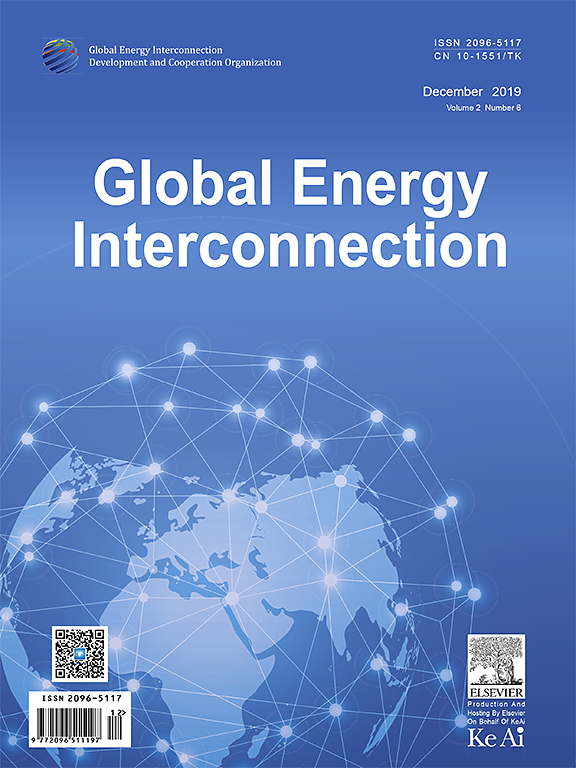Recommended articles:
-

-
Global Energy Interconnection
Volume 1, Issue 4, Oct 2018, Pages 404-405
Global Electricity Interconnection
Keywords
Abstract
Sustainability and climate change are the biggest challenges faced by humanity.Innovation is critical to respond to these challenges.
Insufficient action against climate change has put the world on track for a catastrophic situation, in which the global community will fail to keep the temperature rises well below 2 degrees Celsius, thus increasing pressures on the environment, exposing the world’s ecosystems to severe damage and threatening the lives of millions of people.
Approaches using policies and regulations to drive the required changes top-down and massively deploying existing clean technologies, are a critical part of the response needed.However, that is clearly not enough.
The successful implementation of the Paris Agreement necessitates using all available drivers, including leveraging data and disruptive advanced clean technologies, to promptly scale up climate action in all regions and sectors and by all climate actors, down to the level of an individual citizen.Corporates are no longer the only targets for climate action that reduces their own GHG emissions.Their stakeholders, including financiers, are also expected to exercise their influencing power to foster behavioral changes on their investee companies.This influencing power can bend the GHG emission curve of companies and align it with the long-term goals of the Paris Agreement.
However, the targeted climate actors will act if they are given direction for action, the power to act, the capability to act but also an incentive to act.Indeed, climate action should not be simply considered as a moral duty, the right thing to do.It should also make economic sense.Policies can help make the transition, but, ultimately, it should be financially attractive to shift the trillions in the international capital market toward green investments.This is not possible without innovation.Advanced innovative technologies are needed for all sectors.This is particularly critical for the energy sector which accounts for about 70% of anthropogenic GHG emissions and for which we need to achieve transformational changes to ensure access to affordable, reliable, sustainable and modern energy for all.Indeed, aligning the energy sector with the long-term goals of the Paris Agreement requires raising, up from 15% today, the share of renewables to 65% of the world’s primary energy supply by 2050.Within the energy sector,decarbonizing the power sector is crucial to achieve the long-term goal of the Paris Agreement.Indeed, electricity generation and industry are the largest CO2-emitter of the energy sector and, together are responsible today of about 65% of all its CO2 emissions and electricity demand is expected to grow 29% from 2012 level by 2040, much faster than overall energy demand growth.
The energy transition for the power sector is underway,driven by technology development thanks to major decrease in solar photovoltaics and wind costs.International initiatives such as the 1000 GW of solar by 2030 are shaping the transformation.However, the current power transmission and distribution system could very quickly become a constraint preventing further development of renewable electricity.It was built and optimized for a fossil fuel-based power system relying on a limited number of large scale utilities using transmission grids that supply unidirectionally power to consumers, with very limited large-scale longdistance power flows.To accommodate the share of renewable energy that would be aligned with the climate goals and the SDGs, the electricity network will require an upgrade (i) enabling, within sub-systems, long-distance transmission as well as (ii) a highly networked ecosystem of two ways power flows and digitally enabled intelligent grid architecture.Therefore, a dynamic distributed electricity ecosystem that leverages Distributed Ledger Technologies functionalities, ubiquitous connectivity, intelligent sensors and devices, information and operations technology, and data-driven machine-learning functionality across the grid value chain is expected to emerge and quickly develop.This resulting global smart electricity network will be able to address the mismatch in supply and demand by connecting regions in different time zones, receiving sequentially the solar radiations, hence saving peak capacity.Also contributing in mitigating the intermittency of renewable energy sources, the global smart electricity network could use methods to coordinate aggregations of thermostaticallycontrolled loads, such as air conditioners and refrigerators,to manage frequency and energy imbalances in power systems, which can make demand response a viable strategy for short-term energy balancing.Finally, enhanced interconnection through the global smart electricity network will contribute to addressing the off-taker risk that is the main barrier preventing access to low cost capital and the development of renewable energy projects in countries where finances are scarce.
This is where the Global Electricity Interconnection project is opportune.By making available a global smart electricity network, it will facilitate investment in the power sector and unleash the potential of existing untapped low cost renewable energy sources, supporting enhanced access to affordable, reliable, sustainable and modern energy for all.It will also be a key contribution to the successful implementation of the Paris Agreement.
Challenges are still in place to build such global smart electricity network.New innovations are required to support its implementation.This includes high-phase-order underground cables, which offer high power transfer with lower phase-to-phase voltage magnitude, phase compaction,high-speed impulse attenuation methods for reduction of the required basic impulse level, and non-sinusoidal wave shape applications.The International Energy Agency has estimated that US $8 trillion will be required over the next 25 years just to accommodate distributed intelligence and data analytics.
Fund Information


